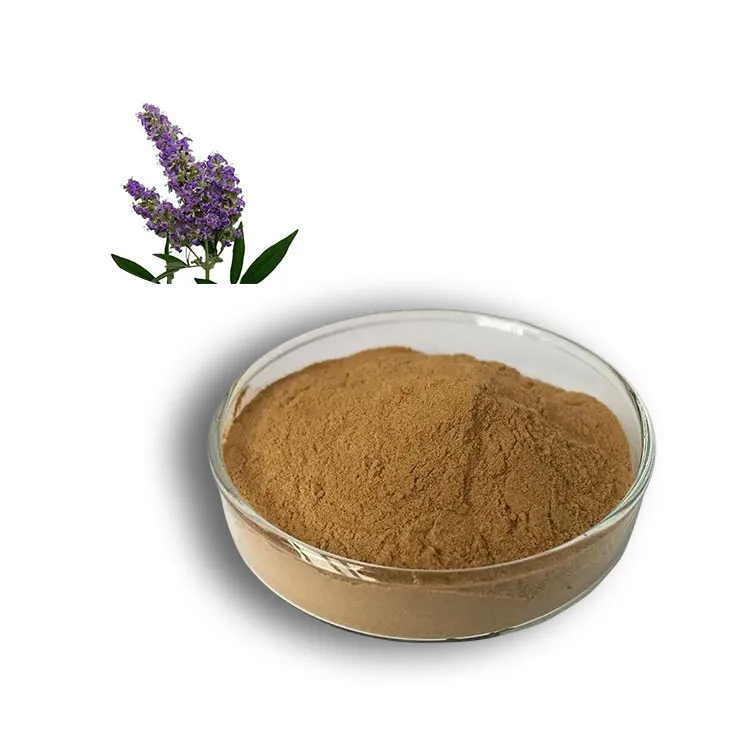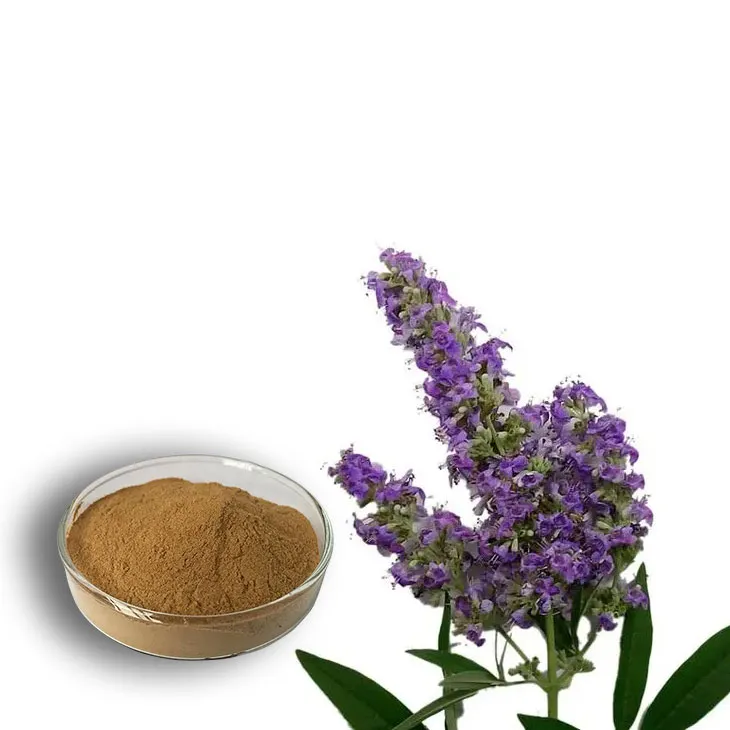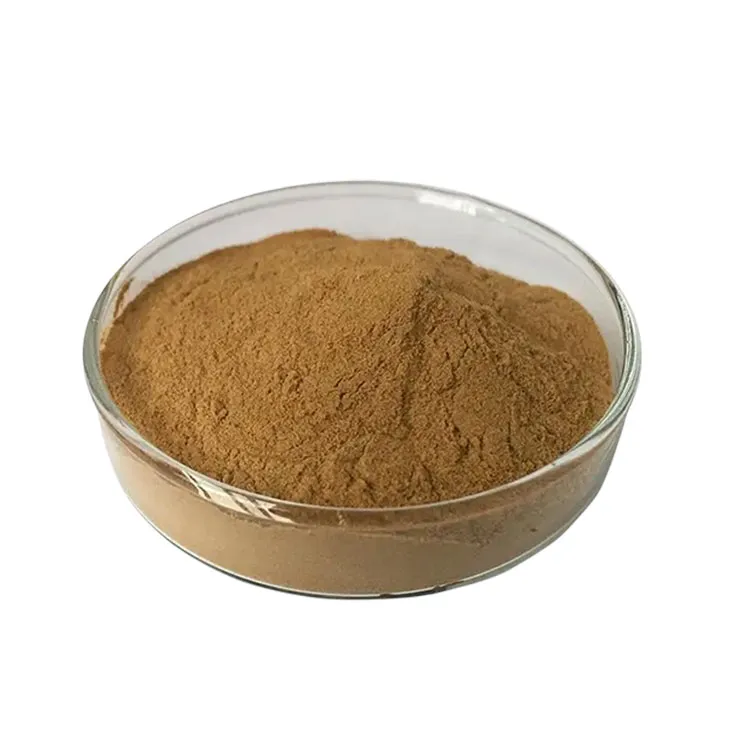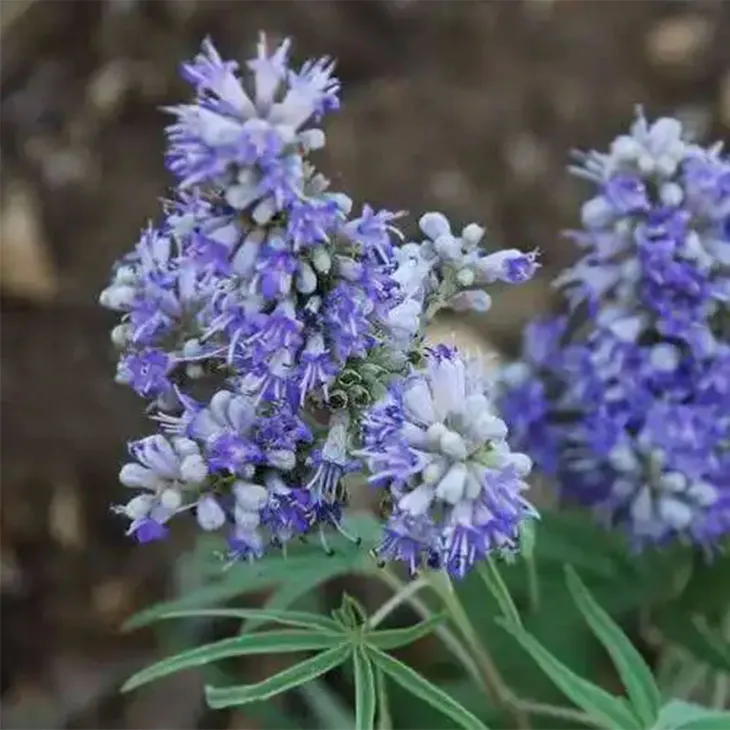- 0086-571-85302990
- sales@greenskybio.com
The process of extracting effective components from chasteberry in chasteberry extract.
2024-11-30

1. Introduction to Chasteberry
Chasteberry, also known as Vitex agnus - castus, is a deciduous shrub native to the Mediterranean region. It has a long history of being used in traditional medicine. Botanically, it typically grows up to 5 - 6 meters in height. The leaves are palmate, usually with 5 - 7 leaflets. The flowers are small, purple or blue - violet, and are arranged in panicles.
In terms of its medicinal value, chasteberry has been used to address a variety of health issues. For women, it is often associated with hormonal regulation. It is believed to help in balancing estrogen and progesterone levels, which can be beneficial in cases of premenstrual syndrome (PMS), irregular menstrual cycles, and menopausal symptoms. Additionally, it may also have anti - inflammatory properties and could potentially be used in the treatment of some inflammatory conditions.

2. Modern Extraction Technologies for Chasteberry Effective Components
2.1 Supercritical Fluid Extraction
Supercritical fluid extraction (SFE) is one of the most advanced techniques used in the extraction of effective components from chasteberry. Supercritical fluids, such as carbon dioxide (CO₂), are used in this process. CO₂ is a popular choice because it is non - toxic, non - flammable, and has a relatively low critical temperature (31.1 °C) and pressure (73.8 bar).
The process of SFE involves the following steps:
- First, the chasteberry sample is prepared. This includes cleaning, drying, and grinding the berries to an appropriate particle size. This step is crucial as it affects the surface area available for extraction.
- The supercritical CO₂ is then pumped into the extraction vessel containing the chasteberry sample. The CO₂ is maintained in its supercritical state by controlling the temperature and pressure. In this state, CO₂ has properties that are intermediate between a gas and a liquid, which allows it to efficiently penetrate the sample matrix and dissolve the target components.
- As the supercritical CO₂ extracts the effective components from the chasteberry, the extract - laden CO₂ is then passed through a separator. By changing the temperature and/or pressure in the separator, the CO₂ reverts to a gaseous state, leaving behind the concentrated extract containing the effective components.
2.2 Solvent Extraction
Solvent extraction is another commonly used method. Organic solvents such as ethanol, methanol, or hexane can be used.
The process typically involves:
- The chasteberry material is soaked in the solvent for a certain period. This allows the solvent to penetrate the plant cells and dissolve the active components.
- After soaking, the mixture is filtered to separate the solid residue from the solvent - containing extract.
- The solvent is then evaporated, usually under reduced pressure, to obtain a concentrated extract.

3. Optimization of the Extraction Process
3.1 Parameter Optimization
In order to enhance the yield and quality of the effective components from chasteberry, several parameters need to be optimized.
For supercritical fluid extraction:
- Temperature: Different effective components may have different optimal extraction temperatures. For example, some components may be more soluble at slightly higher temperatures within the supercritical range. However, if the temperature is too high, it may lead to the degradation of some thermally - sensitive components.
- Pressure: Similar to temperature, the appropriate pressure needs to be determined. Higher pressures generally increase the solubility of components in the supercritical fluid, but excessive pressure may also cause equipment problems and increase energy consumption.
- Extraction time: The extraction time should be long enough to ensure sufficient extraction of the effective components, but not too long to avoid over - extraction of unwanted substances or degradation of the target components.
For solvent extraction:
- Solvent - to - sample ratio: The ratio of the volume of the solvent to the amount of the chasteberry sample affects the extraction efficiency. A higher ratio may lead to better extraction, but it also means more solvent is required, which may increase costs and the difficulty of solvent removal.
- Soaking time: Finding the optimal soaking time is important. Too short a soaking time may result in incomplete extraction, while too long a soaking time may not necessarily improve the extraction yield significantly and may also increase the risk of contamination.
3.2 Pretreatment of Chasteberry
Proper pretreatment of chasteberry can also improve the extraction process.
- Micronization: Grinding the chasteberry to a fine powder can increase the surface area available for extraction. This can enhance the contact between the sample and the extraction medium (whether it is a supercritical fluid or a solvent), thereby improving the extraction efficiency.
- Drying: Drying the chasteberry before extraction can remove moisture, which may interfere with the extraction process. Different drying methods, such as air drying, oven drying, or freeze - drying, can be considered depending on the nature of the components to be extracted and the requirements of the extraction method.

4. Safety and Environmental Considerations
4.1 Safety Considerations
When extracting effective components from chasteberry, safety is of utmost importance.
- In the case of solvent extraction, the solvents used are often flammable and toxic. Adequate safety measures, such as proper ventilation in the extraction area, use of explosion - proof equipment, and appropriate personal protective equipment for operators, are essential.
- For supercritical fluid extraction, although carbon dioxide is generally considered safe, high pressures are involved. The extraction equipment must be designed and maintained to ensure safe operation, and operators should be well - trained to handle any potential pressure - related emergencies.
- The final Chasteberry Extract should also be tested for safety. This includes testing for the presence of any residual solvents (in solvent extraction), heavy metals, and microbial contamination to ensure that it is safe for human consumption or other intended uses.
4.2 Environmental Considerations
Environmental impact is another factor to consider in the extraction process.
- In solvent extraction, the disposal of used solvents can be a major environmental concern. Organic solvents can be harmful to the environment if not properly disposed of. Therefore, methods such as solvent recovery and recycling should be considered to reduce waste and environmental pollution.
- Supercritical fluid extraction, especially when using carbon dioxide, has a relatively lower environmental impact. Since carbon dioxide can be obtained from industrial waste gases in some cases, and it is a greenhouse gas, using it in the extraction process can be considered a form of carbon dioxide utilization, which is beneficial to the environment to a certain extent.

5. Conclusion
The extraction of effective components from chasteberry is a complex process that involves careful selection of extraction methods, optimization of extraction parameters, and consideration of safety and environmental factors. Modern extraction technologies such as supercritical fluid extraction offer many advantages in terms of efficiency, product quality, and environmental friendliness. However, solvent extraction still has its place in certain situations. By continuously researching and improving the extraction process, we can better utilize the medicinal value of chasteberry and ensure the production of high - quality Chasteberry Extracts.
FAQ:
What are the botanical features of chasteberry?
Chasteberry is a small shrub or tree. It typically has a certain leaf shape, often serrated edges. The flowers are usually small and may be of a particular color. It also bears fruits which are an important part of the plant for extraction purposes.
What is the main medicinal value of chasteberry?
Chasteberry has several medicinal values. It is often associated with hormonal regulation, especially in relation to women's health. It may help in alleviating pre - menstrual syndrome symptoms, and has potential effects on hormonal balance which can in turn have various positive impacts on the body's overall well - being.
How does supercritical fluid extraction work in extracting effective components from chasteberry?
Supercritical fluid extraction utilizes a fluid that is above its critical temperature and pressure. In the case of chasteberry, the supercritical fluid (usually carbon dioxide) can penetrate the plant material effectively. It has properties similar to both a gas and a liquid, which allows it to dissolve the effective components from the chasteberry. Then, by changing the pressure and temperature, the supercritical fluid can be converted back to a gas, leaving behind the extracted components.
What are the ways to optimize the extraction process of effective components from chasteberry?
One way is to adjust the parameters of the extraction method, such as the temperature, pressure and extraction time in supercritical fluid extraction. Another aspect is the pre - treatment of the chasteberry material, like grinding it to an appropriate particle size. Also, choosing the right solvent or extraction medium can play a role in optimizing the process to increase the yield and quality of the effective components.
What are the safety considerations in the extraction of chasteberry effective components?
When using extraction solvents, it is important to ensure that they are non - toxic and do not leave harmful residues in the final extract. In the case of supercritical fluid extraction, proper handling of high - pressure equipment is crucial to avoid accidents. Also, the purity of the final product needs to be monitored to ensure that there are no contaminants that could pose a safety risk to consumers.
What are the environmental considerations in the extraction of chasteberry effective components?
If solvents are used, their environmental impact should be considered. Solvents that are biodegradable and have low environmental toxicity are preferred. In supercritical fluid extraction, the energy consumption for maintaining the supercritical state needs to be optimized to reduce the overall environmental footprint. Also, proper waste management of the plant material after extraction is important to minimize environmental impact.
Related literature
- Extraction of Bioactive Compounds from Chasteberry: A Review"
- "Optimizing the Extraction of Effective Components in Chasteberry Extracts"
- "Supercritical Fluid Extraction of Chasteberry: Process and Quality"
- ▶ Hesperidin
- ▶ citrus bioflavonoids
- ▶ plant extract
- ▶ lycopene
- ▶ Diosmin
- ▶ Grape seed extract
- ▶ Sea buckthorn Juice Powder
- ▶ Beetroot powder
- ▶ Hops Extract
- ▶ Artichoke Extract
- ▶ Reishi mushroom extract
- ▶ Astaxanthin
- ▶ Green Tea Extract
- ▶ Curcumin Extract
- ▶ Horse Chestnut Extract
- ▶ Other Problems
- ▶ Boswellia Serrata Extract
- ▶ Resveratrol Extract
- ▶ Marigold Extract
- ▶ Grape Leaf Extract
- ▶ blog3
- ▶ blog4
-
Standard - process propolis extract powder.
2024-11-30
-
How to make powder with peppermint oil?
2024-11-30
-
Organic konjac powder, Australia.
2024-11-30
-
Chinese Cassia Seed Extract Suppliers.
2024-11-30
-
Suppliers of Organic Diosmin Powder.
2024-11-30
-
Hesperidin with the best reviews.
2024-11-30
-
Organic Epimedium Extract Powder Supplier.
2024-11-30
-
Peppermint Extract Powder
2024-11-30
-
Uridine-5'-monophosphate Disodium salt
2024-11-30
-
Licorice Root Extract Powder
2024-11-30
-
Konjac Powder
2024-11-30
-
Coconut Water Powder
2024-11-30
-
Agaricus Blazei Extract
2024-11-30
-
Hawthorn powder
2024-11-30
-
Dan Shen Root Extract/Salvia Root Extract
2024-11-30
-
White Willow Bark Extract
2024-11-30
-
Lotus leaf extract
2024-11-30





















